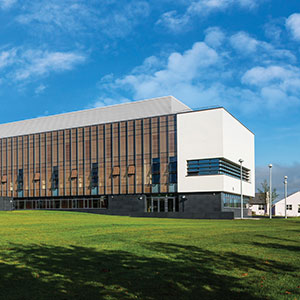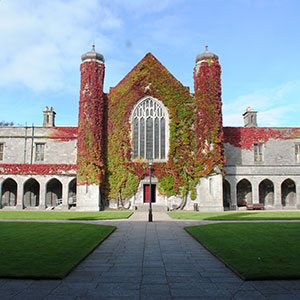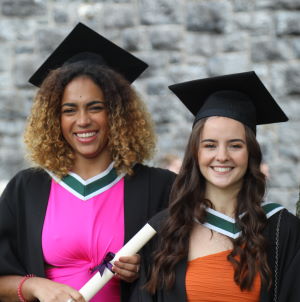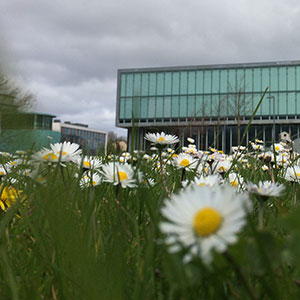-
Courses

Courses
Choosing a course is one of the most important decisions you'll ever make! View our courses and see what our students and lecturers have to say about the courses you are interested in at the links below.
-
University Life

University Life
Each year more than 4,000 choose University of Galway as their University of choice. Find out what life at University of Galway is all about here.
-
About University of Galway

About University of Galway
Since 1845, University of Galway has been sharing the highest quality teaching and research with Ireland and the world. Find out what makes our University so special – from our distinguished history to the latest news and campus developments.
-
Colleges & Schools

Colleges & Schools
University of Galway has earned international recognition as a research-led university with a commitment to top quality teaching across a range of key areas of expertise.
-
Research & Innovation

Research & Innovation
University of Galway’s vibrant research community take on some of the most pressing challenges of our times.
-
Business & Industry

Guiding Breakthrough Research at University of Galway
We explore and facilitate commercial opportunities for the research community at University of Galway, as well as facilitating industry partnership.
-
Alumni & Friends

Alumni & Friends
There are 128,000 University of Galway alumni worldwide. Stay connected to your alumni community! Join our social networks and update your details online.
-
Community Engagement

Community Engagement
At University of Galway, we believe that the best learning takes place when you apply what you learn in a real world context. That's why many of our courses include work placements or community projects.
June University of Galway study reveals major shifts in young people’s health behaviours over 25 years
University of Galway study reveals major shifts in young people’s health behaviours over 25 years
Findings of The Health Behaviour in School-aged Children (HBSC) study in Ireland from 1998-2022
Health Behaviour in School-aged Children (HBSC) study in Ireland from 1998-2022 reveals a drop in substance misuse; a decrease in condom use and an increase in young people feeling pressured by schoolwork
The Health Behaviour in School-aged Children (HBSC) Trends Report 1998–2022, launched today by the Minister of State at the Department of Health with special responsibility for Public Health, Wellbeing and the National Drugs Strategy, Jennifer Murnane O’Connor TD, highlights notable changes in the health behaviours and wellbeing of Irish children over the past 25 years.
This report, led by researcher Louise Lunney in collaboration with the HBSC research team at the Health Promotion Research Centre at University of Galway, found significant reductions in substance use and improvements in certain health behaviours, alongside a worrying decline in mental health and increased pressure related to schoolwork.
The report brings together data from over 70,000 children in Ireland since 1998, offering critical insights to inform policy, practice and supports for young people.
The HBSC is a cross-sectional study conducted in collaboration with the World Health Organisation Regional Office for Europe. It runs every four years.
Among the key trends reported:
- Smoking among 10–17-year-olds fell to 4.7% in 2022, down from 22.6% in 1998.
- Reports of having ever been drunk declined from 33% in 1998 to 17.8% in 2022.
- Cannabis use in the past year dropped to 6.5% in 2022, compared to 12.3% in 1998.
- Daily soft drink consumption decreased dramatically from 37.4% in 2002 to 6.6% in 2022.
However, the report also reveals that:
- 46.3% of children report feeling low weekly or more often - double the figure from 1998.
- 47.8% of children feel pressured by schoolwork, up from 32.9% in 1998.
- Despite an overall decline in reported sexual activity, fewer young people (55.2% in 2022, down from 78.0% in 2010) report using a condom during last sexual intercourse
The HBSC study is conducted every four years in collaboration with the World Health Organization Regional Office for Europe. In 2022, 45 countries and regions participated, collecting data on health behaviours, health outcomes and the social contexts of children’s lives.
Minister Jennifer Murnane O’Connor said: “I would like to extend my most sincere thanks to the University of Galway’s HBSC team, who have conducted this study on our behalf since 1998. HBSC is a key, internationally comparable study that provides us with vital information regarding the health of our children, highlighting both positive trends, such as the reductions in tobacco, alcohol and cannabis use since 1998, but also the more concerning ones, such as many of the indicators relating to mental health and the pressures of schoolwork.
“I also want to thank the children and the schools involved in this research. In taking the time to make your voices heard, you are helping us to help future generations and to make growing up a more positive experience. As the report shows, we have done some great work over the past 25 years; however, there is always more to do.”
Professor Saoirse Nic Gabhainn, Principal Investigator at the Health Promotion Research Centre at University of Galway, said: “A study like HBSC, that tracks trends in health behaviours, outcomes and social context of children’s lives over such a long period is a huge resource to anyone interested in children’s lives. Over 70,000 children have been involved since 1998, and many people across Irish society have helped in some way, particularly schools, teachers and parents.
“While many indicators have improved over time, the pressures that children feel from school and society are increasing. Now is the time for our society to support teachers and parents in schools and communities to protect and promote youth well-being.”
Compared to findings from 1998*, the study found fewer children engaging in substance use, more children feeling pressured by schoolwork, less young people reporting sexual activity and among those that do – fewer are reporting using a condom. Mental health indicators have disimproved, with more young people reporting feeling low, fewer reporting high life satisfaction and fewer reporting feeling happy with their lives.
Additional findings include:
Health behaviour outcomes – both positive and negative trends
- More children report sleep difficulties in getting to sleep about every week or more frequently – 46.3% in 2022, compared to 30.9% in 1998.
- More children report having a headache about every week or more frequently – 38.2% in 2022, compared to 26.0% in 1998.
- More children brushing their teeth more than once a day – 72.5% in 2022, compared to 57.6% in 1998.
- More children report always wearing a seatbelt when travelling by car – 81.2% in 2022, compared to 41% in 1998.
Co-Principal Investigator, Professor Colette Kelly from the Health Promotion Research Centre at the University of Galway, said: “This report is the culmination of many years of work, and brings together some good news about the health behaviours of Irish children. However, it also illustrates persistent inequalities in young people’s health. Children from lower social class groups are doing less well than those from higher social class groups across a range of indicators. The report provides a breakdown of age, gender and social class patterns which provide more in-depth information on each of the indicators.”
*Base years vary across indicators – see full report details here: https://www.universityofgalway.ie/hbsc/
Ends















